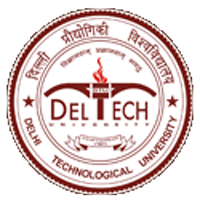Please use this identifier to cite or link to this item:
http://dspace.dtu.ac.in:8080/jspui/handle/repository/18864Full metadata record
| DC Field | Value | Language |
|---|---|---|
| dc.contributor.author | SINGH, BHUPINDER | - |
| dc.date.accessioned | 2022-02-21T08:36:39Z | - |
| dc.date.available | 2022-02-21T08:36:39Z | - |
| dc.date.issued | 2021-07 | - |
| dc.identifier.uri | http://dspace.dtu.ac.in:8080/jspui/handle/repository/18864 | - |
| dc.description.abstract | COVID-19 (novel coronavirus disease) is a serious illness that has killed millions of civilians and affected millions around the world. Mostly as result, numerous technologies that enable both the rapid and accurate identification of COVID-19 illnesses will provide much assistance to healthcare practitioners. A machine learning- based approach is used for the detection of COVID-19. In general, artificial intelligence (AI) approaches have yielded positive outcomes in healthcare visual processing and analysis. CXR is the digital image processing method that plays a vital role in the analysis of Covid-19 disease. Due to the maximum accessibility of huge scale annotated image databases, excessive success has been done using multiclass support vector machines for image classification. Image classification is the main challenge to detect medical diagnosis. The existing work used CNN with a transfer learning mechanism that can give a solution by transferring information from GENETIC object recognition tasks. The DeTrac method has been used to detect the disease in CXR images. DeTrac method accuracy achieved 93.1~ 97 percent. In this proposed work, the hybridization PSO+MSVM method has worked with irregularities in the CXR images database by studying its group distances using a group or class mechanism. At the initial phase of the process, a median filter is used for the noise reduction from the image. Edge detection is an essential step in the process of COVID-19 detection. The canny edge detector is implemented for the detection of edges in the chest x-ray images. The PCA (Principal Component Analysis) method is implemented for the feature extraction phase. There are multiple features extracted through PCA and the essential features are optimized by an optimization technique known as swarm optimization is used for feature optimization. For the detection of COVID-19 through CXR images, a hybrid multi-class support vector machine technique is implemented. The PSO (particle swarm optimization) technique is used for feature optimization. The comparative analysis of various existing techniques is also depicted in this work. The proposed system has achieved an accuracy of 97.51 percent, SP of 97.49 percent, and 98.0 percent of SN. The proposed system is compared with existing systems and achieved better performance and the compared systems are DeTrac, GoogleNet, and SqueezeNet. | en_US |
| dc.language.iso | en | en_US |
| dc.publisher | DELHI TECHNOLOGICAL UNIVERSITY | en_US |
| dc.relation.ispartofseries | TD - 5412; | - |
| dc.subject | DETECTION SYSTEM | en_US |
| dc.subject | HYBRIDIZATION PSO+MSVM ALGORITHM | en_US |
| dc.subject | PCA (PRINCIPAL COMPONENT ANALYSIS) | en_US |
| dc.subject | PSO (PRATICLE SWARM OPTIMIZATION) | en_US |
| dc.title | A HYBRID MSVM COVID-19 IMAGE CLASSIFICATION ENHANCED USING PARTICLE SWARM OPTIMIZATION | en_US |
| dc.type | Thesis | en_US |
| Appears in Collections: | M.E./M.Tech. Information Technology | |
Files in This Item:
| File | Description | Size | Format | |
|---|---|---|---|---|
| Thesis 2k19ISY04.pdf | 1.23 MB | Adobe PDF | View/Open |
Items in DSpace are protected by copyright, with all rights reserved, unless otherwise indicated.



